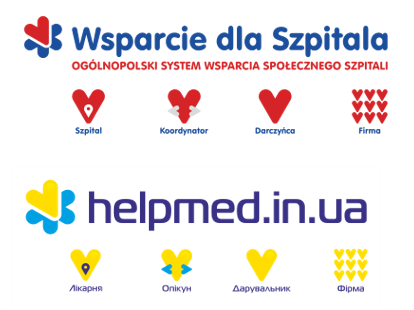We devoted the last 12 months to building and developing two systems coordinating bottom-up aid for hospitals during a pandemic – in Poland and Ukraine. What is the essence of these systems, the differences between countries, and our conclusions for the future?
Phase 1. WsparcieDlaSzpitala.pl in Poland
During the first wave of the COVID-19 in Poland, in March 2020, there were significant deficiencies in the provision of personal protective equipment and food products to Polish hospitals. From day one, the assistance from citizens and enterprises was broad but uncoordinated and chaotic. There was no two-way communication about the real needs and no secure solutions for providing support to hospitals.
In mid-March, scientists from the Poznan University of Economics and Business, programmers from the Clorce Solutions, and social activists from the PARK Foundation decided to create a system to help hospitals declare their needs, donors to declare their help, and coordinators to collect and deliver. This way, the public support would be more accurate.
Simultaneously with the team and concept appearance, Salesforce announced the free access to their platform for the care management team responding to the coronavirus pandemic. That made it possible to launch the first version of the system in just one week and its further fast development. By May, 700 hospitals and nursing homes and a network of 360 local coordinators registered in the system. It wouldn’t be possible if not for the commitment of the 32-person team and local companies’ help.
WsparcieDlaSzpitala.pl explainer (PL): https://youtu.be/Xp046ksjDWI
Phase 2. Helpmed.in.ua in Ukraine
The created system played an important role in Poland’s first wave of the pandemic, organizing and dynamizing many aid activities. Between May and June 2020, signals from Ukraine started reaching us that they would also need a similar system. The Polish Challenge Fund announced almost at the same time, provided an excellent opportunity for this.
The essence of the 6-month project implemented by the Poznan University of Economics Knowledge Transfer Company and Hi-Tech Office Ukraine was to gather previous experiences, train partners on the Ukrainian side, build a local version of the system and implement selected hospitals and a group of local coordinators, accompanied by a local information campaign.
Twenty hospitals from 5 Ukrainian cities and leading patient organizations joined the project. Based on the local needs analysis, the Ukrainian version of the civic support system was registered and developed. Series of webinars were implemented and executed. Awareness campaign led to interest and engagement of the state institutions (including the Ministry of Health, Ministry of Digital Transformation and the Chief State Sanitary Doctor) and local business.
Helpmed.in.ua explainer (UA): https://youtu.be/TWQamD06reU
Similarities and differences between countries and conclusions for the future
The project demonstrated Polish and Ukrainian partners’ good cooperation in organizing a coordinated response to the COVID-19 pandemic. The Polish and Ukrainian health care systems and the organization of social interaction are in many respects similar. Helpmed.in.ua platform, based on Polish experience, turned out to be convenient to use by hospitals and coordinators. What is essential is that the state institutions, local governments, and Ukrainian social organizations (Ukrainian patients, 100% life, Helpmedik) supported both the project’s idea and its implementation.
The differences resulted mainly from the moment of system implementation (the beginning of a pandemic in Poland, the middle of a pandemic in Ukraine), the different hospital computerization levels, and the political culture. During the webinars, doctors of registered clinics became inactive and poorly communicative, which was related to their physical overload and exhaustion. Hospitals inactively published information about their needs because they did not have enough practice in using IT instruments in their work. And as a legacy of the past, some hospitals do not publish information about their needs anywhere, fearing criticism from central and local administration.
The experience gained from the two countries proved the legitimacy of creating an advanced platform coordinating bottom-up aid and building an ecosystem of donors, coordinators, and institutions in need of help. Such a combination organizes the helping process and makes it more effective and safe. There is a need to create an open-source solution covering various assistance types (beyond a pandemic situation and hospitals). And such work has already been undertaken. People and institutions willing to cooperate are welcome to contact us.
Project Movie: https://youtu.be/9ZenYIbpzlY
